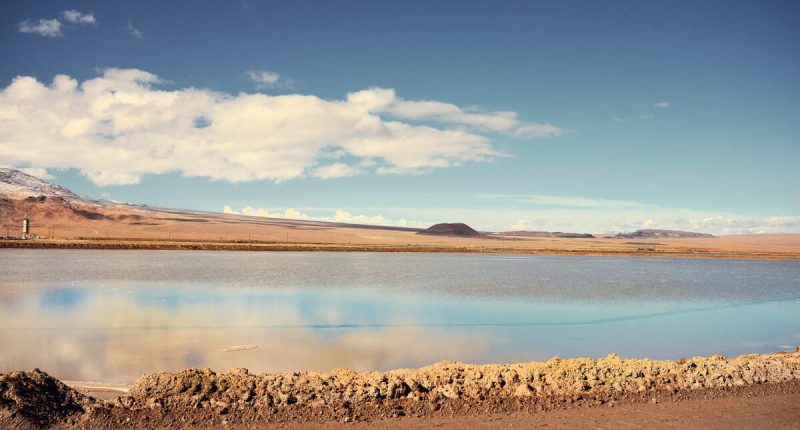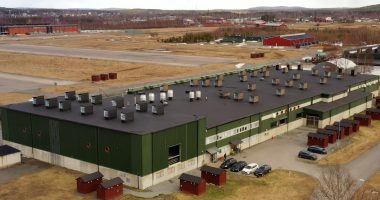The green energy revolution would be nothing without lithium as its use in electric vehicles continues to drive the industry forward.
In line with this, increased lithium supply is vital for the industry to continue thriving. According to the Center on Global Energy Policy, demand for lithium has tripled since 2017 and has the potential to grow tenfold by 2050.
Case in point, it is estimated lithium demand is growing by 250,000 to 300,000 tons of lithium carbonate equivalent per year, which is half of what total lithium supply was in 2021.
As of 2023, lithium production increased to roughly 171,000 tons in 2023 and is expected to grow at a compound annual growth rate of 13 per cent between now and 2030. In this growing industry, some Canadian lithium stocks are worth watching.
Globally, 34 lithium mines are currently in production, according to GlobalData. With that in mind, here are the world’s 10 largest lithium mines.
Greenbushes Lithium Operations
The Greenbushes Lithium Operations is owned and operated by Talison Lithium, which is owned by joint venture partners Tianqi Lithium Corporation / IGO Limited (51 per cent ownership) and Albemarle Corp. (NYSE:ALB) (49 per cent ownership).
Located in Western Australia, Talison Lithium began construction of a second large chemical-grade lithium processing plant at the Greenbushes Lithium Operations in 2017 and opened in 2019.
The project effectively more than doubled production capacity at the mine to 1.34 million tons per annum of lithium concentrates. A third processing plant began construction in 2023, while a tailings facility is also operating at Greenbushes.
The mine produced 210,000 million tons per annum in 2023 and is expected to operate until 2039.
Salar de Atacama Mine
The Salar de Atacama Mine is owned and operated by Sociedad Química y Minera de Chile (NYSE:SQM) and is in Antofagasta, Chile.
SQM produces potassium chloride and potassium sulfate and lithium carbonate from brines extracted from the Salar de Atacama. The mine contains high concentrations of lithium and potassium and significant concentrations of sulfate and boron.
Salar de Atacama, which is an in-situ leaching mine, produced roughly 160,000 million tons per annum in 2023. SWM is currently in the process of increasing the production capacity of the carbonate plant at the mine’s lithium chemical production facility by the end of 2024. The mine is expected to operate until 2030.
Wodgina Lithium Mine
The Wodgina Lithium Mine, also owned and operated through a joint venture with Albemarle and Mineral Resources, is in Western Australia.
The mine is an open pit pegmatite lithium deposit and includes a three-stage crushing plant and a spodumene concentration plant, which was constructed between 2018 and 2019. It was then placed on care and maintenance after the commissioning of the first of three trains before restarting in 2022.
As of now, all three trains are operational. Roughly 55,6000 tons of lithium were produced in 2023 and it is expected the mine will operate until 2053.
Salar de Atacama Mine (Albemarle)
Located in Chile, the Salar de Atacama Mine is also owned by Albemarle and is an in-situ leaching mine. In 2023, the greenfield mine produced roughly 52,200 tons of lithium and has a mine closure date of 2043.
Mount Marion Lithium Project
The Mount Marion Lithium Project in Western Australia is owned by Ganfeng Lithium Group. The mine is the world’s second-largest high-quality spodumene mine, which was put into production in 2017 and is still in production.
The mine has an annual output of 450,000 to 480,000 tons of lithium concentrate and produced an estimated 46,600 tonnes of lithium in 2023. The mine is expected to operate until 2047.
Pilgangoora Project
Owned and operated by Pilbara Minerals (ASX:PLS), the Pilgangoora Project is a surface mine in Western Australia’s resource-rich Pilbara region. The Pilgangoora ore body is some of the world’s largest hard-rock lithium deposits.
The operation consists of two processing plants, including the Pilgan Plant, which produces spodumene and tantalite concentrates; and the Ngungaju Plant, which produces a spodumene concentrate.
It is estimated the mine produced 44,100 tons of lithium in 2023 while the mine is expected to operate until 2048.
Chaerhan Lake Mine
The Chaerhan Lake Mine is in Qinghai, China, and is owned by Qinghai Salt Lake Industry. The mine is China’s largest brine extraction project, while also being the second largest in the world, and is estimated to have more than 60 billion tons of salt reserves.
In 2023 the mine produced roughly 27,500 tons of lithium.
Ngungaju Plant Project
The Ngungaju Plant Project in Western Australia is also owned by Pilbara Minerals.
The plant was acquired by Pilbara Minerals in 2021. Ramp-up and optimization of the plant, to nameplate production of up to 180,000 to 200,000 tons per annum of spodumene concentrate, was achieved in September 2022.
The mine produced roughly 26,000 tons of lithium in 2023 and is expected to operate until 2031.
Salar del Hombre Muerto Mine
Located in Catamarca, Argentina, the Salar del Hombre Muerto Mine is owned by Arcadium Lithium (NYSE:ALTM).
The company has been producing from this deposit from 1997 and has expansion plans currently underway.
The mine produced an estimated 24,000 tons of lithium in 2023 and has an expected closure date in 2062.
Jiajika Project
Ganzizhou Rongda Lithium operates the Jiajika Project and is the largest known lithium sodumene ore body in Asia.
The mine in Sichuan province, China, was designed with a 29-year lifespan with operations restarting in 2019 after a six-year closure. It has a mining capacity of 1.05 metric tons per annum.
The mine produced an estimated 19,300 tons of lithium in 2023.
Lithium mining outlook
As of 2022, the lithium sector had an estimated valuation of US$1.66 billion and is projected to reach 3.4 billion by 2032, growing at a compound annual growth rate of 7.3 per cent during the forecast period.
Contributing to that growth will be regions such as the Asia Pacific with increased lithium production across various of its countries, including Australia.
Australia notably produces more than half the world’s lithium, while China exports much of its supply to countries such as the United States, Japan and India. China’s contribution of lithium can largely be tied to its use in electronic vehicles and production facilities for electricals and electronics.
Join the discussion: Find out what everybody’s saying about public companies and hot topics about stocks at Stockhouse’s stock forums and message boards.
The material provided in this article is for information only and should not be treated as investment advice. For full disclaimer information, please click here.
(Top image: Adobe Stock)







